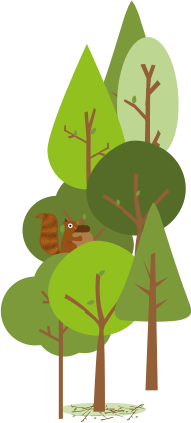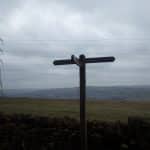

Blog
Adventures in Nature
We’d love to know how being part of our work helps you to get out more, so we are launching a photo competition. We want to see you out and about enjoying nature, getting hands on with habitats and breathing in the fresh air. Why not get snapping over the next May bank holiday?

*The winner will be selected on 8 June from all entries uploaded before 5 June and will win a place on the forest school of their choice, subject to availability.

So out went packing light and in came the a checklist of sleeping bags, sleeping mats, spare clothes and all the gubbins that goes with going anywhere with children, plus bags full of food and cooking stuff as we weren’t going to be able to eat in the pub. After faffing about trying to get kit together, a drive up there in drizzling rain, then traipsing across a field laden down with bags on every arm I wondered what had happened to the dream of a spontaneous adventure, and was it all worth it for one night outdoors?






We can’t wait to go again and I am looking forward to a weekend of canoeing and wild camping in Norfolk next month – I’ve just to break it to the kids that they’re not coming (woo hoo!)

Given the relative distance of our houses, it was surprising to find that the meeting point was so close to home, but half the group couldn’t make it and the rest of us only had a few hours to spare so it seemed a good fit. So far our lack of time and surfeit of responsibilities meant our adventures have not taken us far from home, but checking the Microadventure book, I found this from author Alistair Humphreys:
“You should not compare you adventure to climbing K2. You should compare it to the realistic alternative that faces most people with busy lives and tight diaries which is doing no adventure at all”
So reconciled to another micro microadventure, I set out from my house and headed up to the moor 

We had a very upbeat walk home. A pint in the local, encountering some deer in the woods and the sun

So in January a few of us, met in the pub and committed to a year of Microadventuring; twelve do-able mini adventures that would take us out of our comfort zone and open ourselves up to simple challenge and new discoveries. We made a list of ideas including wild camping, wild swimming and mapless exploring (and some other ideas which maybe don’t quite stand up in the sober light of day!) and got our diaries out. Perhaps the easiest on the list was a full moon walk, so we checked the calendar and arranged to meet at St Ives estate at the next full moon, 3 February.



Get Out More will be blogging here about all its Microadventures in 2015. You can also learn about them on Facebook from Wild Goose and Twitter from Bright Aire

Many people, especially women, say they feel unsafe, which is understandable given the stories we hear in the media and the evidence of anti social behaviour (litter, graffiti, vandalism and evidence of drinking etc) that is common in urban parks. But ironically it is the lack of people around that also contributes to this sense of insecurity and if we can get more people to use the country park, the safer it will feel. Dog walkers use the site regularly, but dogs themselves are can also be an issue; dog mess and uncontrollable dogs can make off-putting hazards. Walking my own dog in Keighley I have noticed how many people shy away when they see her coming. I had assumed it was straightforward fear of dogs until a Muslim lady on one of our group walks explained to me that in her culture a dog is considered unclean and if one touches your clothes, it is necessary to change them before prayer, which I hadn’t considered before.

Growing up in a village, in a family that enjoyed being outdoors, it is useful to be reminded that people engage with the natural environment from different cultural viewpoints. What seems natural to some may feel alien to others and it is important not to make assumptions. A good case in point: on the same walk mentioned above I was showing the women how to make a fire so we could have a cup of tea. From the comments overheard round the fire, it became obvious that some of the women had grown up in Pakistan cooking all their meals over an open fire, and knew more about the process that I did.

